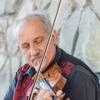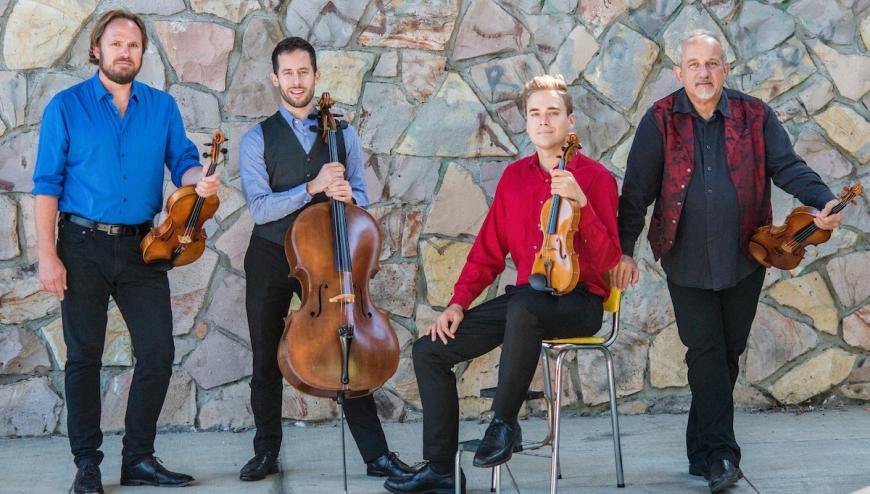
It set telephones ringing excitedly, like something in a cartoon. Jeremy Cohen, violinist and founder of Quartet San Francisco (QSF), had long wanted to work up an album devoted to composer Raymond Scott, whose music had regaled the Warner Bros. animated films of Cohen’s youth. Finally, “I started getting on the phone,” Cohen relates in a Zoom interview from his Oakland home. “And I’m pinching myself to this day that both Gordon Goodwin and Leslie Ann Jones agreed to do this project because I’ve been walking on air ever since.”
Goodwin, who’d met Cohen in Los Angeles and had composed and arranged for Warner Bros. Animation in the 1990s, agreed to co-produce Raymond Scott Reimagined with the violinist and to commit his 18-piece Big Phat Band to the project, alongside QSF and vocal group Take 6.
“And I was just glad I answered my phone,” testifies Jones, joining Cohen and fellow multi-Grammy-winner Goodwin on the Zoom session with SF Classical Voice.
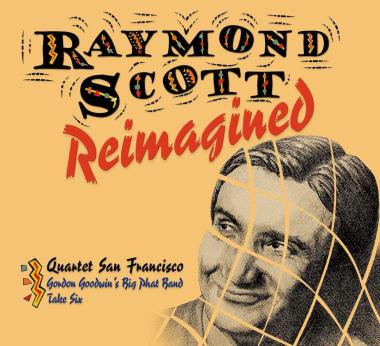
Jones recorded and mixed Reimagined at the Skywalker Sound studios in Marin County, where both Cohen and Goodwin had completed previous projects. “The opportunity to work with Gordon’s band was really thrilling,” she adds. “I was just thrilled that I was the one who got picked for these sessions. I just hope that people get a chance to experience it because Scott is a legacy artist, as it were, who’s treated here in a whole different way … twisted a little to incorporate the instrumentation chosen for this record.”
The reputations of the collaborators helped draw funds to the project, although Cohen continues to seek contributions through QSF’s fiscal sponsorship by InterMusic SF. The album came out in July on Cohen’s Violinjazz label, and there’s a chance to share the experience in person on Sept. 16 at The Write-off Room, a few miles west of Warner Bros. Studios, in the San Fernando Valley. QSF will appear with a downsized Big Phat Band, accompanied by prerecorded mixes of the album’s nine instrumental tracks.
Raymond Scott — born Harry Warnow 115 years ago this month, in Brooklyn to a Russian Jewish family — studied piano, theory, and composition at Juilliard and started his career as a pianist for CBS Radio. His older brother Mark conducted and directed the Your Hit Parade program for CBS, and when his orchestra began featuring his younger sibling’s idiosyncratic compositions, the Raymond Scott pseudonym was adopted to avoid chargers of nepotism.
In 1936, the 28-year-old Scott formed what he termed a “Quintette” with several CBS colleagues, including trumpeter Bunny Berigan and drummer Johnny Williams, father-to-be of film composer John Williams and percussionist Don Williams (who’s heard on the “Twilight in Turkey” track of Reimagined, playing the same cowbell Johnny used in the original recording). Throughout the decade, the Raymond Scott Quintette scored several hits, including the perennial “Powerhouse,” “Toy Trumpet” (vocalized by Shirley Temple in Rebecca of Sunnybrook Farm), and “In an 18th-Century Drawing Room,” emblematic of the way Scott integrated classical motifs into his jazzy creations (in this case, borrowing from Mozart’s Piano Sonata No. 16 in C Major). Scott composed by demonstrating melodies, riffs, and rhythms to his players, rather than by putting notes on paper.
Scott expanded his ensemble to a big band and in 1942 was named music director of CBS Radio. Among the jazz luminaries employed by his radio band were Ben Webster, Charlie Shavers, and Cozy Cole. Scott sold his music publishing rights to Warner Bros. in 1943, prompting the studio’s music director, composer Carl Stalling, to start positioning Scott’s music where it would be widely heard by future generations, in Looney Tunes and Merrie Melodies cartoons screened at movie theaters and on TV. Scott succeeded his brother Mark as leader of Your Hit Parade, there featuring his second wife, Dorothy Collins, on vocals. He also wrote scores for theater and film and a Suite for Violin and Piano, performed at Carnegie Hall.
With his establishment of Manhattan Research in 1946, Scott began shifting his creativity from composition and performance to technological innovation. Far ahead of his time, he explored electronic effects and music processing, and in the 1950s he collaborated with synthesizer visionary Robert Moog. In 1971, Scott was hired by Berry Gordy as director of Motown’s electronic and research department. Questlove, in his own mini-documentary on Scott’s Electronium, a gigantic early processor, credits Scott with “the first use of modern sound in music.”
Scott was significantly disabled by a stroke in 1987, by which time both his recordings and his electronic developments had fallen into disuse. His tunes, though, continued to enhance such contemporary cartoons as The Simpsons and The Ren & Stimpy Show. Journalist and musical archivist Irwin Chusid and compilation icon Hal Willner produced Reckless Nights and Turkish Delights for Columbia in 1992, the first major-label collection of the Quintette’s music from the ’30s. Scott succumbed to pneumonia in 1994.
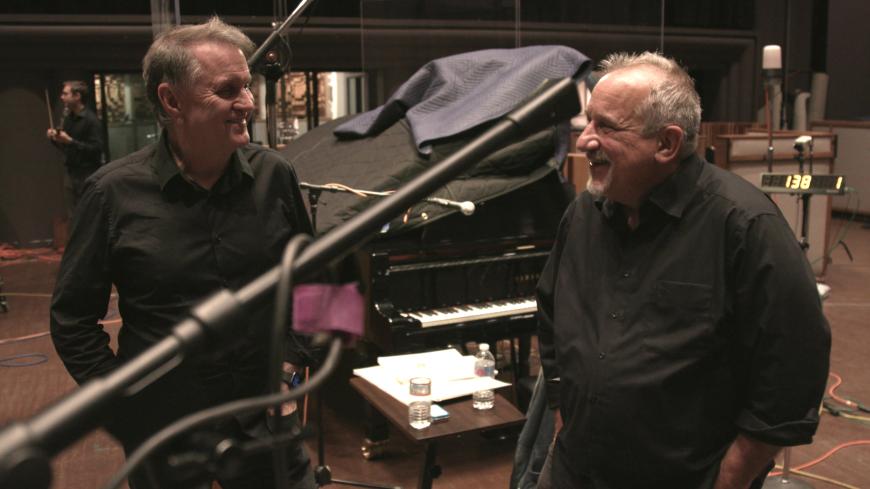
Speaking from his Ventura County base, Goodwin, who fashioned the arrangements for Reimagined, recalls the “deep dive” into Scott demanded by his employment with Warner Bros. “I had to make sure I sounded just like him and like Carl Stalling — and not like Gordon Goodwin — because Warner Bros. wanted us to hit that target in the center. And I heard conflict in Scott’s music. It comes from the jazz language that he uses, in terms of the alteration of the chords but also the chromaticism, which is something that’s been sadly neglected in contemporary pop music. When you hear Raymond Scott talk, you hear it in his voice, that same edge.”
The musical tracks on Reimagined are artfully interspersed with brief spoken-word segments that have Scott discussing creativity, rehearsal, and experimentation and John Williams crediting the “quintessentially American” quality of Scott’s music (alongside the work of fellow second-generation immigrants George Gershwin and Leonard Bernstein). Williams appears in Scott’s son Stan Warnow’s 2012 documentary Deconstructing Dad. Others of the composer’s admirers featured in the film include Cohen, Willner, clarinetist Don Byron (who has recorded several Scott tunes), Mark Mothersbaugh of Devo, and DJ Spooky.
Jones bears a special connection to Scott by way of her father, Spike Jones, known for his own spirited takes on musical genres. “My dad recorded Scott’s ‘Powerhouse’ in 1961, replicating it with sound effects and other things, doing what he did with all his irreverent stuff.”
Though not relying on sound effects, Goodwin invested his arrangements with numerous surprising delights, including pairing QSF with two pianos (Goodwin, multitracked on “Huckleberry Duck”) and deploying smaller ensembles of three horns (“Toy Trumpet”) and a saxophone quintet (“Yesterday’s Ice Cubes”). Take 6 brings alluring vocals to “In an 18th Century Drawing Room” and, without the big band, to the closing track, “Serenade,” which, says Goodwin, “is a beautiful, emotional piece of music.” After the kinetic energy of the earlier material, “you can barely believe Scott wrote it.”
“I’m fully trained as a classical violinist, but my life experience included other exposure,” notes Cohen, who serves as the album’s executive producer. “I would come home from school and see Warner Bros. cartoons, and I would hear grand opera and symphonic works, and packaged up with that was the music of Raymond Scott. If I was in a funny or tense situation, it was very natural for me to imagine Raymond Scott as part of the soundtrack of my existence. And that’s the contextual material that Quartet San Francisco likes to live in. If you want Beethoven or Schubert or any of the iconic stuff, there are other quartets that specialize in that. We specialize in the music of our lifetimes.”
Cohen’s previous recordings of a few Scott compositions connected him with the composer’s family and the Raymond Scott Archives. While performing at the Raymond Scott Festival in Los Angeles, Cohen was told by Carrie Makover, Scott’s daughter, about an incomplete sketch titled “Cutey and the Dragon,” which Scott had developed in 1982 with his granddaughter Kathy, a student of viola. Makover retrieved the sketch from a box and gave it to Cohen, who in turn passed it on to Goodwin.
“This was probably the greatest honor I had the whole time, for the family to trust me,” beams Goodwin. “I wrote a bridge for it that didn’t exist, but I knew what Scott would have done; I used my understanding of his vocabulary. Then I did a demo and sent it off, and they liked it. And the band had a great time playing it.” The completed composition, as lively as its title, was added to the album as an unexpected world premiere.
Choosing what else to feature from among Scott’s many tantalizing tunes wasn’t easy. “‘Powerhouse’ is so catchy and also something we could market,” says Goodwin. “It was also the first song of his I’d heard, so I wanted to put my imprint on that.” The tune’s place in popular culture dates back to Bugs Bunny and Porky Pig cartoons in 1943 and numerous assembly-line sequences over three decades, with later appearances in Animaniacs, Looney Tunes: Back in Action, The Simpsons, SpongeBob SquarePants, and as a bumper theme for Cartoon Network.
“Some songs were eliminated from our list because of their titles,” Goodwin continues. “Terms that Scott and the culture might have been comfortable with in the ’50s would be less comfortable today.”
Other tunes were selected for the variety of innovations they inspired in Goodwin, whose arrangements delighted Cohen. “I could hear Gordon’s voices so clearly,” says Cohen, “just like I’d heard in Raymond Scott or in Tchaikovsky’s orchestrations that same kind of intersection, a craft that exceeds one genre or another.”
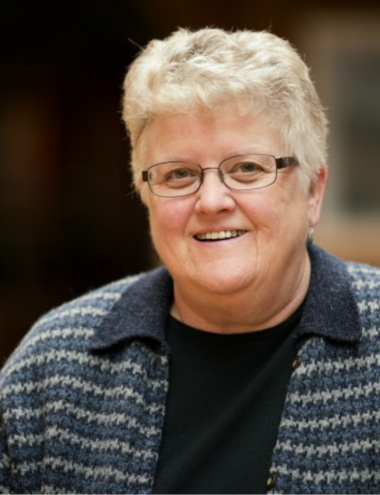
It was Goodwin who suggested recruiting Take 6, who formed as an a capella gospel sextet in Alabama in 1980 and have gone on to Grammy wins and collaborations with numerous pop and jazz artists, including the like-minded Manhattan Transfer. “At first I’d thought about a bunch of studio singers,” says Goodwin, “but then I realized that these guys can sing a kind of classical thing but with a little grit to it, a bit of soul. And we’d have another marketing hook, another demographic we could maybe bring to the music.”
For Jones, the most unusual challenge of the recording was how to array the different elements at Skywalker Sound. “The first decision was whether the string quartet would be in the same room with the big band,” she recounts, “which, of course, it couldn’t be. The studio is a very large space, but a big band is very immediate-sounding, and it was important for the quartet to have enough presence.” The string players were isolated in a smaller adjoining room, with Jones and assistant engineer Dann Thompson tasked with figuring out “how to maintain the sound so it sounds like everybody’s in the room at the same time. And I’m not trying to kiss up to Gordon, but all those little nuances are so much easier when the arrangements are so great. And all these players were so fantastic. I didn’t have to move a fader up or down to create dynamics that weren’t played well. The work is hard enough, so we all like having fun, and what better way to have fun than recording something like this, with people who are raring to go.”
The enthusiasm continues, with Goodwin and Cohen looking forward to the performance at The Write-off Room later this month and a similar live offering planned for Northern California. They also anticipate a vinyl release of the album, which Jones considers essential “because music like this really does affect you in a physical way.”



